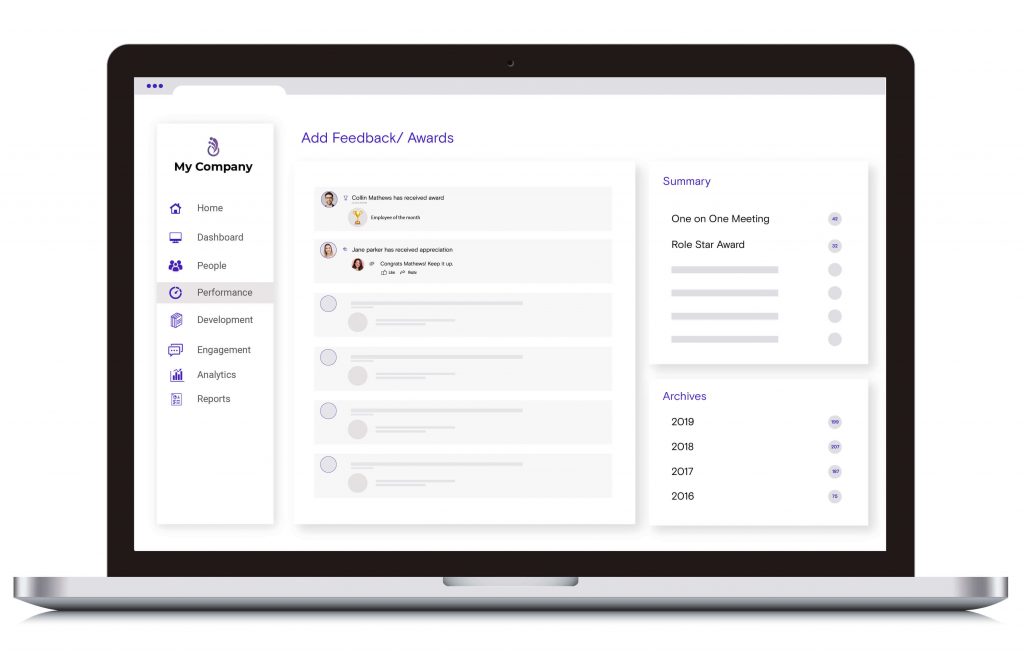Employee Engagement Survey Best Practices
Employee engagement surveys can be the most effective way to measure how employees are engaged with the organization. Employee retention has always been a challenge as the workforce looks for new opportunities. But, with the onset of the COVID-19 pandemic, employees can also take up work in remote locations, making them more challenging to retain. These challenges make it essential for employers to develop successful strategies to keep their employees engaged. The solution is not just to use employee engagement surveys but use them effectively.
The purpose behind Employee Engagement Surveys
The objective of employee engagement surveys is to increase employee retention. High performers often leave an organization because they are not satisfied with their work or are not recognized for their contribution. Employee engagement surveys go a long way to creating a people-friendly workspace and a growth culture. Their primary purpose is to:
- Track engagement levels and engagement drivers.
- Track the efficacy of the current employee engagement strategies
- Show that employee feedback matters to the organization as a whole
What do you want to measure through Employee Engagement Surveys?
Determining what you want to measure is the first step to creating a survey. For instance:
- Is it their happiness at your workplace?
- Is it to measure their engagement levels?
- Do you want to know if they feel supported and empowered?
- Do their goals align with the organization?
Once you have a clearly defined objective and want to read the pulse of your organization, it is time to create an employee engagement survey that best suits your goals. While developing unique employee engagement surveys, we must be clear on what we hope to achieve and how they can be achieved. Now that the purpose and objectives of the employee engagement survey are clear, let’s discuss how we can optimize the surveys with best practices.
Here are a few of the best practices to keep in mind when creating a survey:
- Short surveys work better
- Avoid complicated language
- Create easy questions at the beginning and end.
- Aim each question at one topic only
- Limit open-ended questions
- Make the survey user-friendly
- Remember to thank them for their time

Short surveys work better
The length of your survey can make a difference to the employee response rates. Employees rarely look forward to spending time answering surveys. It is best to keep surveys short to get employees’ responses. So, make sure that you design a survey that takes around 10 minutes to complete to maximize your response rates.
Avoid complicated language
Typically, surveys generated by HR have HR jargon. The language may not be clear to employees across the organization. It is best to use inclusive language that is simple and easy to understand. Keeping the questions simple in language will make employees feel respected. Moreover, they won’t like to spend time trying to understand questions instead of completing the survey and moving on to their next task.
Start and end with easy questions
Starting and ending with easy questions will leave the employees with a positive feeling. Such questions make them feel that you value their time. Asking easy questions at the beginning of the survey will make your employees look at the survey with greater comfort and get them to address the questions with seriousness.
Aim each question at one topic only
When the questions are focused on a single topic, it is easier to analyze the data. You will get more precise results that enable data-driven strategic planning. You will also get a deeper insight into the pulse of the workforce.
Limit open-ended questions
Employee engagement surveys must have a reason to include open-ended questions. But, if your organization is large, analyzing too many open-ended questions can be an arduous task. The data quality may suffer as the answers would be wordy and inconsistent. One or two open-ended questions relating to employees’ suggestions will suffice. It would help separate the quantitative data from the more insightful information and will leave the employees feeling that you are interested in their views.
Make the design user-friendly
User-centric design is essential for the success of an engagement survey. If the survey design is hard to navigate, employees are likely to become frustrated and will resent having to go through the questions. On the other hand, making the design user-friendly will make the employees more responsive.
Remember to thank them for their time
Often, organizations forget to thank their employees for their time and effort in responding to the survey. It is vital to acknowledge their effort as it makes them feel they are appreciated for their attempt to make the organization a better place.
Wrapping up
With advanced technology and automation, enterprises have new ways to collect and measure data. Surveys enabled with AI algorithms facilitate big data to measure employee engagement by analyzing email response times and network connections across the enterprise. Data derived from well-structured surveys help garner the correct information to improve the enterprise as a whole.

Relevant Articles:
Also Read: How to Make Employee Surveys Successful
Also Read: Best practices for most successful Employee Engagement Surveys
Also Read: 8 Benefits of Employee Engagement Software

